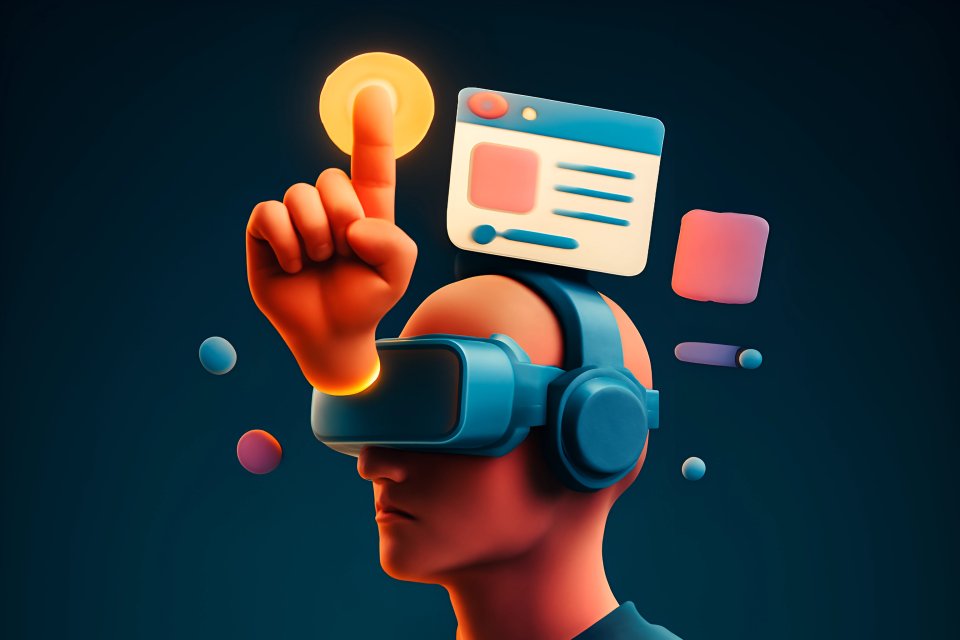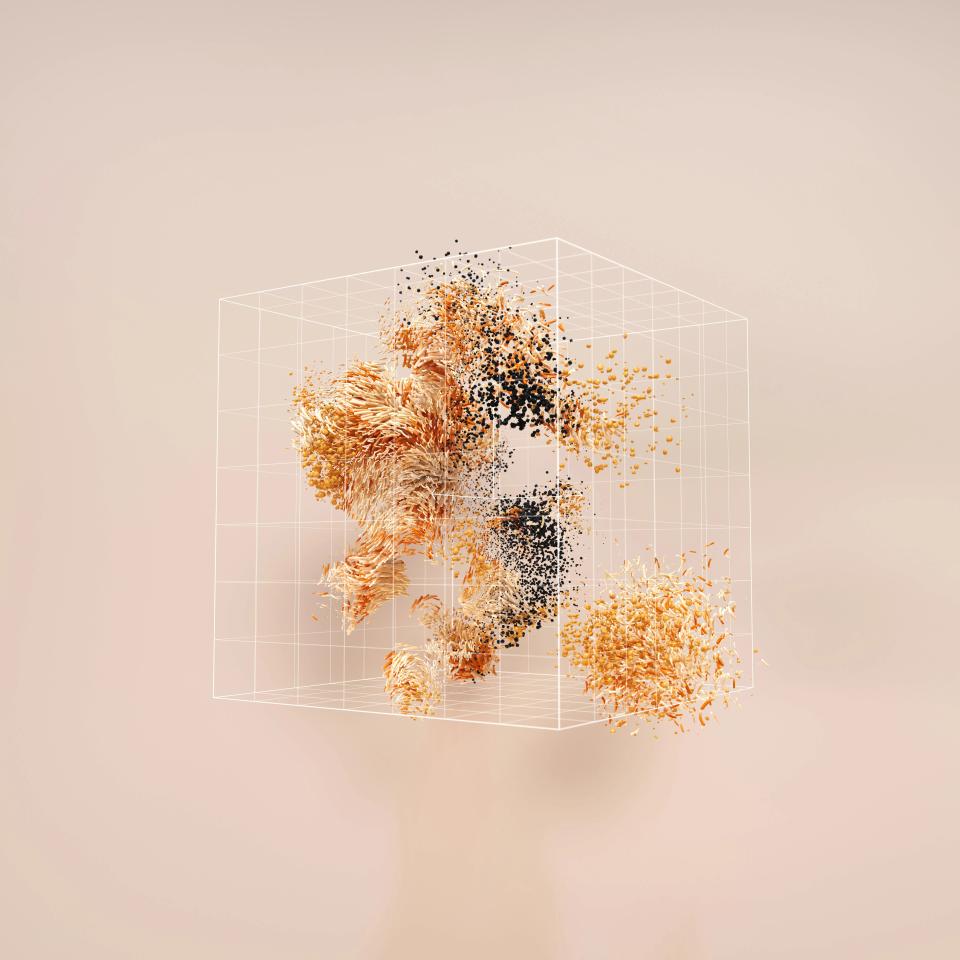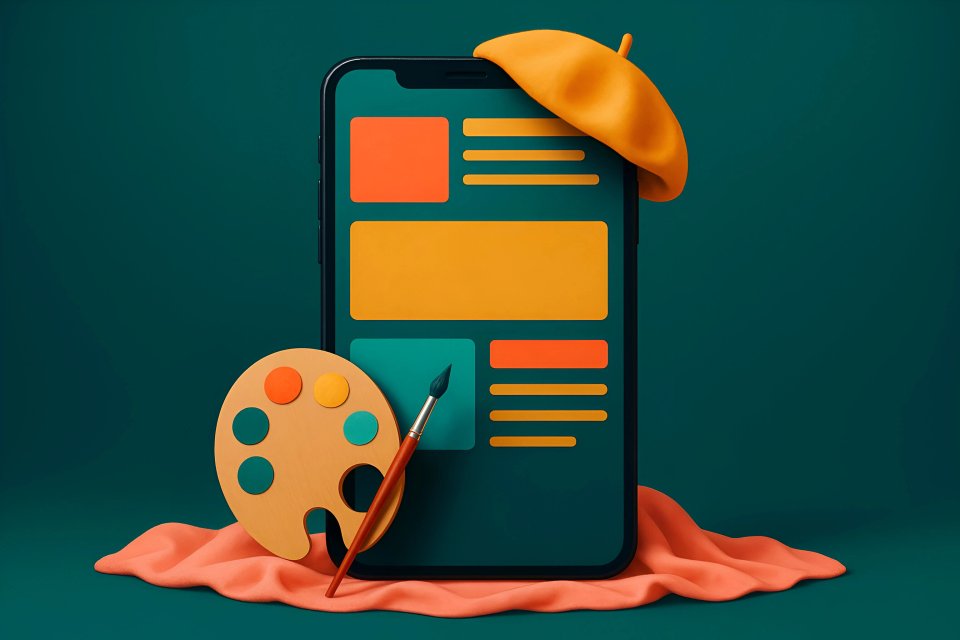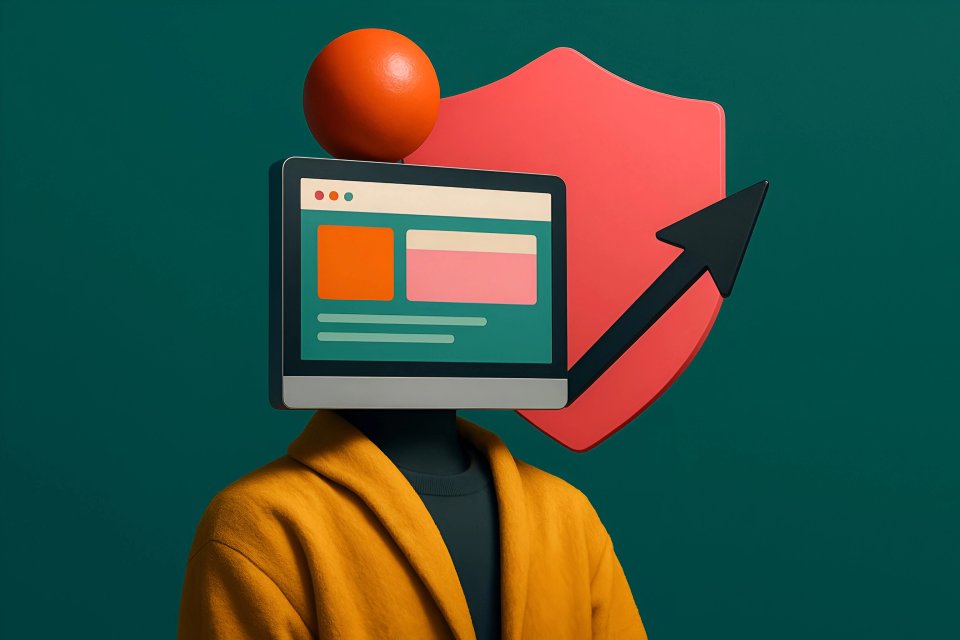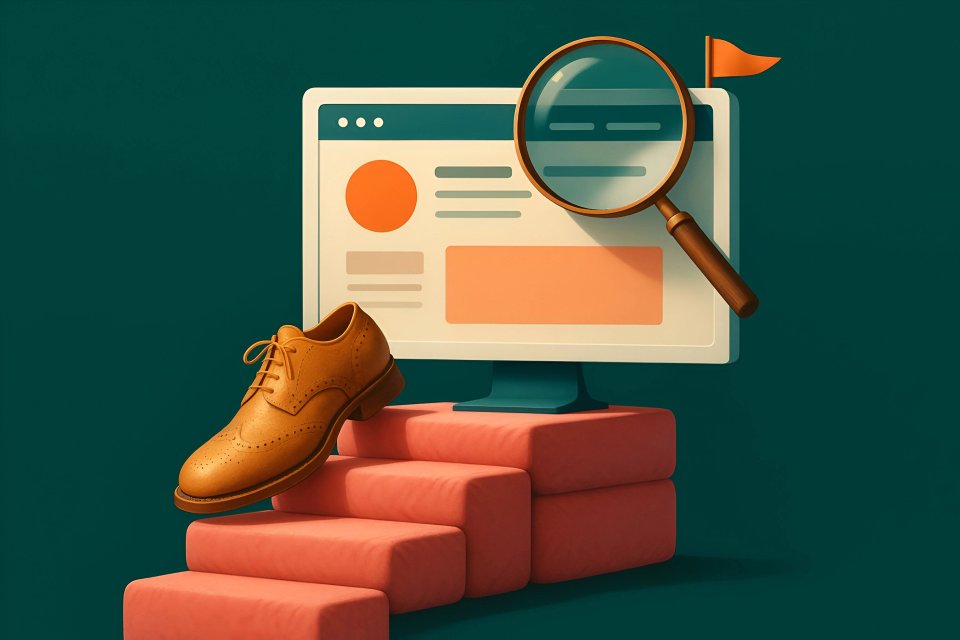Ever landed on a website and just… left? You’re not alone. Did you know that a staggering 88% of online consumers are less likely to return to a site after a bad experience, as highlighted in an analysis of UX costs by Jobins? That’s a massive chunk of potential customers vanishing into the digital ether, simply because their initial interaction was frustrating, confusing, or just plain clunky. In today's hyper-competitive digital world, basic usability is merely the entry ticket; it’s no longer enough to keep users engaged or loyal.
The truth is, user expectations have skyrocketed. People don't just want functional; they crave intuitive, engaging, and deeply personalized experiences. They want to feel understood, valued, and delighted at every click and scroll. This shift demands more than just a pretty interface; it requires a sophisticated understanding of advanced UI/UX design techniques that transform a digital product from a simple tool into a memorable journey.
At CaptivateClick, with over 15 years of crafting captivating digital experiences, we've seen firsthand how advanced UI/UX transforms user interaction from functional to phenomenal. We believe that exceptional design isn't just about aesthetics; it's about creating a seamless bridge between your business goals and your users' deepest desires. This article will arm you with actionable insights into specific advanced techniques, empowering you to significantly improve 'user engagement', supercharge your 'website optimization', and ultimately, achieve astounding business results.
The Business Case for Advanced UI/UX: Connecting Design to ROI
Still wondering if investing in advanced UI/UX is worth it? Let the numbers talk. When you elevate your user experience, you're not just making things look good; you're directly impacting your bottom line. Sophisticated design isn't an expense; it's a powerful investment that fuels growth and secures your competitive edge.
Reduced Bounce Rates & Increased Time on Page
Imagine users landing on your site and, instead of bouncing away, they stick around, eager to explore. Advanced UI/UX design achieves this by creating intuitive navigation, engaging content presentation, and a flow that feels natural and inviting. When users find what they need effortlessly and enjoy the process, they stay longer, signaling to search engines that your site offers real value. This focus on user satisfaction is paramount for keeping visitors captivated.
Improved Conversion Rates
What if you could guide users seamlessly towards making a purchase, signing up, or taking that crucial next step? That’s the power of strategic UI/UX. Forrester Research, highlighted by Eficode's insights on UX ROI, found that a well-designed UX can lead to conversion rate increases of up to 400%. By understanding user psychology and employing advanced design techniques, you can dismantle friction points and create compelling pathways that turn visitors into loyal customers. Explore how expert conversion optimization techniques can be applied to your e-commerce platform.
Enhanced Brand Loyalty & Perception
Think about the brands you love. Chances are, they offer more than just a product; they offer an experience. Advanced UI/UX creates these memorable, delightful interactions that build trust and foster deep brand loyalty. When users feel good interacting with your brand online, they associate those positive emotions with your business. Conversely, Jobins notes that 67% of customers abandon brands due to poor user experiences, underscoring the critical role of UX in customer retention.
Competitive Differentiation
In a sea of sameness, how do you make your brand shine? Advanced UI/UX is your secret weapon. It allows you to create unique, innovative, and truly user-centric experiences that set you apart from the competition. When your digital presence is not just functional but also a joy to use, you create an undeniable advantage that competitors will struggle to replicate, ensuring you capture and retain market share.
Core Advanced UI/UX Design Techniques to Elevate Your Digital Presence
Ready to move beyond the basics and unlock the true potential of your digital platforms? These core advanced UI/UX design techniques are your roadmap to creating experiences that not only meet user needs but anticipate them, delight them, and keep them coming back for more. Each technique offers a unique way to enhance 'user engagement' and drive 'website optimization'.
Hyper-Personalization & Contextual Interfaces
Imagine a website that feels like it was built just for you. That’s the magic of hyper-personalization. This technique involves tailoring content, features, and interactions based on rich user data—think behavior, location, purchase history, and demographics. It’s advanced because it moves beyond broad segmentation to deliver truly individual-level customization, making each user feel uniquely seen and understood.
The UX benefit is immense: users encounter information that’s incredibly relevant to their immediate needs and interests, streamlining their journey and boosting satisfaction. According to Pagent.ai's discussion on hyper-personalization in UI/UX, Gartner’s 2024 trend report highlights its power to improve engagement and conversions through dynamic content adaptation. For an actionable tip, consider implementing dynamic content blocks that change based on user profiles, personalized product recommendations, or location-aware features that offer timely, relevant assistance.
Microinteractions & Meaningful Feedback
Ever noticed those tiny, satisfying animations when you click a button, or the subtle visual cue when a page is loading? Those are microinteractions. They are small, contained moments that accomplish a single task and provide clear feedback to the user. While seemingly minor, they are advanced because they require meticulous attention to detail and a deep understanding of how these small elements contribute to the overall feel and usability of an interface.
These subtle design elements are crucial for a smooth UX. They provide instant feedback, guide users, help prevent errors, and can add an unexpected touch of delight that makes an interface feel alive and responsive. As Unmatched Style explains in their piece on microinteractions, these consist of a trigger, rules, feedback, and loops/modes. To implement this, ensure every interactive element provides clear visual or haptic feedback, and use animations thoughtfully to confirm actions or indicate status changes, like a pull-to-refresh gesture.
Motion Design & Purposeful Animation
Motion in UI/UX is no longer just for flashy intros; it’s a powerful tool for communication and engagement. Purposeful animation uses movement to guide the user's attention, illustrate transitions between states, explain complex processes, and even enhance storytelling within the digital experience. It’s considered advanced because it involves a sophisticated understanding of timing, easing (the acceleration or deceleration of an animation), and how motion can create a narrative flow in a digital context, much like cinematography in film.
Well-executed motion design significantly improves comprehension, making interfaces feel more dynamic and intuitive. It can also reduce perceived load times, making waiting more bearable. Google Design's principles for meaningful motion emphasize that animations should feel natural and purposeful, guiding users without distracting them. An actionable tip is to use animations to smoothly transition between different views or pages, or to animate data visualizations to make complex information easier to digest and understand.
Data-Driven Design & Iterative Optimization
The most beautiful design in the world is useless if it doesn’t work for your users. Data-driven design is the practice of continuously refining your UI/UX based on cold, hard facts: user analytics, heatmaps, A/B testing results, and direct user feedback. This approach is advanced because it demands a systematic, scientific methodology for testing hypotheses and making informed design decisions, rather than relying on guesswork or personal preference.
The core UX benefit is that your designs become truly user-centered, evolving to meet actual user needs and behaviors, which in turn ensures they perform optimally. By regularly analyzing data, you can pinpoint exact areas of friction and identify opportunities for improvement. As detailed by Optimizely in their insights on UX analytics, correlating user behavior with business metrics helps identify critical pain points. For an actionable step, regularly review your website analytics to identify user drop-off points, and conduct A/B tests on crucial UI elements like calls-to-action or navigation menus, a key aspect of effective conversion optimization strategies.
Advanced Accessibility (Beyond WCAG Basics)
Accessibility isn't just a checkbox; it's a commitment to inclusivity. Advanced accessibility goes beyond the fundamental Web Content Accessibility Guidelines (WCAG) to consider a wider spectrum of abilities, including cognitive differences, motor skill impairments, and even situational limitations (like using a device in bright sunlight or a noisy environment). This means thinking deeply about things like ARIA (Accessible Rich Internet Applications) landmarks for screen readers, ensuring robust keyboard navigation beyond simple tabbing, and providing clear, helpful error recovery messages.
Designing with this deeper level of empathy makes your product usable by a significantly wider audience, which is not only ethically responsible but also smart business. Interestingly, features designed for users with disabilities often improve the overall usability for everyone. A study by Deque Systems revealed that their automated testing identifies 57% of digital accessibility issues, surpassing accepted industry benchmarks and highlighting the power of advanced tools. As an actionable tip, regularly test your digital products with assistive technologies and ensure all interactive elements are fully keyboard accessible and have clear, visible focus states.
Voice User Interface (VUI) Integration & Conversational Design
"Hey Google, what's the weather?" Voice is rapidly becoming a preferred way to interact with technology. VUI integration involves incorporating voice commands for navigation, search, or data input within your website or app. Conversational design focuses on making these voice interactions feel natural, intuitive, and human-like, rather than robotic and frustrating. This is advanced because it blends traditional UI principles with the complexities of human conversation, natural language processing (NLP), and understanding user intent from spoken words.
The UX benefits are compelling: VUI offers hands-free interaction, which can be significantly faster for certain tasks (like a quick search) and caters to the growing user preference for voice-activated technology. It also opens up accessibility for users who may find traditional interfaces challenging. UX Collective offers valuable heuristics for VUI design, adapting Nielsen’s classic usability principles for voice. For a practical starting point, consider implementing VUI for search functionalities or quick actions within your application, and always focus on using natural language with clear, concise prompts. You can see a practical application in how AI chatbots revolutionize customer engagement.
Emotional Design & Storytelling Through UI
Do you want users to just use your product, or do you want them to love it? Emotional design is about intentionally crafting interfaces that evoke positive emotions—joy, trust, excitement, a sense of accomplishment. Storytelling through UI guides users through a narrative, making their interaction feel more like a journey than a series of tasks. This is an advanced technique because it requires a nuanced understanding of human psychology and how visual elements, color, typography, microcopy, and interaction flow combine to create specific emotional responses.
Creating a strong emotional connection with users leads to increased brand affinity, makes the experience far more memorable, and can even make users more forgiving of minor usability hiccups. The Interaction Design Foundation explains emotional design across three levels: visceral (the initial impact), behavioral (the pleasure of use), and reflective (the long-term satisfaction and storytelling). To apply this, strategically use imagery, color psychology, and carefully crafted microcopy to create a specific mood or tell a compelling story that resonates with your target audience, ensuring it aligns with your essential website design principles that enhance brand identity.
Integrating Advanced UI/UX with Your Broader Digital Strategy
Advanced UI/UX doesn't exist in a vacuum. Its true power is unleashed when it's seamlessly woven into the fabric of your entire digital strategy. Think of it as the engine that drives not just user satisfaction, but also your marketing effectiveness, brand perception, and ultimately, your business growth.
Synergy with SEO
You might wonder, "What does pretty design have to do with search rankings?" The answer: a lot! Search engines like Google prioritize websites that offer excellent user experiences. Advanced UI/UX directly improves key engagement metrics like time on page, lower bounce rates, and user interaction depth. When users love your site, they stay longer and explore more, signaling to search engines that your content is valuable and relevant, which can positively impact your search rankings.
Fueling Conversion Optimization
Advanced UI/UX is the bedrock of effective Conversion Rate Optimization (CRO). Every technique we've discussed—from hyper-personalization to emotional design—is geared towards guiding users smoothly and persuasively towards your desired actions. A clear, intuitive, and engaging interface removes friction and builds trust, making users far more likely to convert, whether that's making a purchase, filling out a form, or subscribing to your newsletter. This is where effective conversion optimization through design and content truly shines.
Brand Consistency
Your website or app is often the primary touchpoint for your brand. Advanced UI/UX techniques must not only be effective but also align perfectly with and enhance your overall brand identity and messaging. The visual language, tone of voice, and even the feel of microinteractions should all reinforce who you are as a brand. This consistency builds recognition and trust, ensuring a cohesive experience across all platforms, a concept further explored in combining user experience and branding in website design.
The CaptivateClick Approach
At CaptivateClick, we don't just build websites; we architect digital experiences. We strategically integrate these advanced UI/UX techniques into our comprehensive web design and digital marketing solutions. Leveraging our global expertise and a deep understanding of user psychology, we ensure that every design decision is purposeful, data-driven, and aligned with your unique business objectives to create truly captivating results.
Staying Ahead: Future UI/UX Trends to Keep on Your Radar
The digital landscape is a relentless storm of innovation. What's cutting-edge today might be standard tomorrow. To maintain your competitive advantage and continue delivering exceptional user experiences, it's crucial to keep an eye on the horizon and anticipate the next wave of UI/UX trends.
Emerging concepts are already beginning to reshape how we interact with technology. AI-driven UX and predictive interfaces promise to create even more personalized and anticipatory experiences, learning user behavior to offer solutions before a need is even consciously expressed. CES Ltd. highlights that AI-driven tools are already boosting engagement, with some industries seeing up to 40% increases through such personalized experiences. Augmented Reality (AR) and Virtual Reality (VR) are also poised to move from niche applications to mainstream use, offering immersive new ways to engage with content and products.
Furthermore, the conversation around ethical design and digital wellbeing is gaining momentum. Users are becoming more conscious of their digital consumption, and designers have a responsibility to create experiences that are respectful, empowering, and promote healthy engagement. The field of UI/UX is dynamic and ever-evolving; embracing continuous learning and adaptation isn't just recommended, it's essential for long-term success.
Conclusion: Elevate Your Experience, Elevate Your Brand
In the relentless pursuit of digital dominance, advanced UI/UX design is no longer a luxury—it's the lifeblood of success. Moving beyond mere functionality to craft experiences that are intuitive, engaging, and emotionally resonant is crucial for creating truly 'captivating' and effective digital products. These sophisticated techniques are your key to unlocking deeper 'user engagement' and superior 'website optimization'.
Investing in these advanced UI/UX strategies isn't just about making things look pretty; it's a direct investment in your brand's future and your business's growth. When you prioritize the user, the user prioritizes you. This commitment translates into higher conversions, fiercer loyalty, and a brand that doesn't just compete, but leads.
Ready to transform your website or app with advanced UI/UX design that truly captivates and converts? The experts at CaptivateClick are here to help. Contact us today for a consultation and let's build something extraordinary together.
What advanced UI/UX techniques have you found most impactful in your projects? Share your thoughts and experiences in the comments below!

